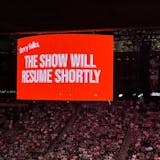Older workers are vital to keeping Minnesota's workforce strong, and can be part of the solution to our state's workforce problem.
In the Star Tribune's Sept. 29 coverage of Minnesota's tight job market and shrinking workforce, "Worker shortage threatens growth," the challenges have been clearly articulated, but a promising opportunity is being overlooked.
Employers need to think and act differently about workers in their 60s, 70s and 80s.
We are members of a citizens commission formed as part of a Courageous Conversations project led by the University of Minnesota's Humphrey School of Public Affairs. The commission has been traveling to communities around the state for the past two years, meeting with employers, civic leaders and job-seekers to explore how Minnesota's aging workforce is affecting their local economies and vitality.
In Marshall, Chisholm, Thief River Falls, Austin and the Twin Cities, we heard repeatedly that older adults often want and need to keep working, and employers consider them some of their finest and most steadfast employees.
So why assume they are all out the door when they hit retirement age? Rather than competing for the same 20-year-old worker (because, frankly, the supply just isn't there, particularly in small towns and rural areas), employers need to focus on the folks already on the job.
What can employers do to hold on to these older workers and make the most of their contributions? In our final report, which we released last month, the committee makes the following recommendations:
• Consider retirement not as a cliff, but as a time of transition. Older adults are rethinking their commitments and their engagements, both paid and unpaid. Don't assume everyone wants to stop working completely.
